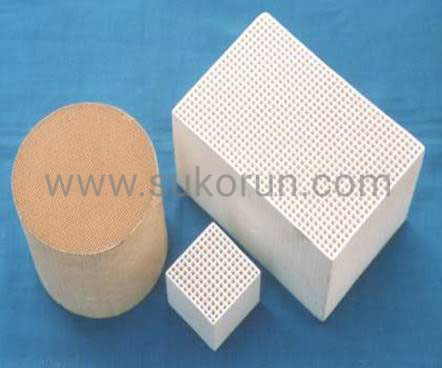Tailoring Substrates for Different Exhaust Gas Temperatures: Optimizing SCR Catalyst Performance in Emission Control

SCR Substrate
Substrate for Selective Catalytic Reduction (SCR) catalysts in engine exhaust gas after treatment is a crucial component that plays a significant role in reducing harmful nitrogen oxides (NOx) emissions. The SCR catalyst substrate provides a surface area for the reaction between the exhaust gases and the catalyst materials, promoting the conversion of NOx into nitrogen (N2) and water (H2O).
There are several types of substrates commonly used in SCR catalysts at different exhaust gas temperatures:
Low exhaust gas temperature (<300°C):
- Cordierite substrate: Cordierite substrates exhibit good catalytic activity at low temperatures and can effectively reduce NOx emissions. They are suitable for applications in gasoline engines and other low-temperature operating conditions.
- Aluminum Titanate substrate: Aluminum Titanate substrates show higher catalytic activity at low temperatures and can quickly reach the operating temperature of the catalyst, effectively reducing NOx emissions.
Moderate exhaust gas temperature (300°C-500°C):
- Cordierite substrate: Cordierite substrates maintain good catalytic activity at moderate temperatures and can effectively reduce NOx emissions. They are widely used in various gasoline and diesel engines.
- Silicon Carbide substrate: Silicon Carbide substrates offer excellent thermal conductivity and durability at moderate temperatures. They can effectively handle high-temperature exhaust and reduce NOx emissions.
High exhaust gas temperature (>500°C):
- Silicon Carbide substrate: Silicon Carbide substrates maintain good stability and catalytic activity at high temperatures. They are suitable for diesel engines operating under high-temperature conditions. They have excellent durability and thermal conductivity, enabling effective treatment of high-temperature exhaust and reduction of NOx emissions.
- Zirconia substrate: Zirconia substrates have a high oxygen storage capacity and maintain good catalytic activity at high temperatures. They are suitable for diesel engines operating under high-temperature conditions, allowing quick attainment of the operating temperature and effective reduction of NOx emissions.
The choice of substrate depends on the exhaust gas temperature, engine type, and application requirements. Manufacturers typically select the appropriate substrate material to ensure optimal performance and effective control of NOx emissions across various temperature ranges.
